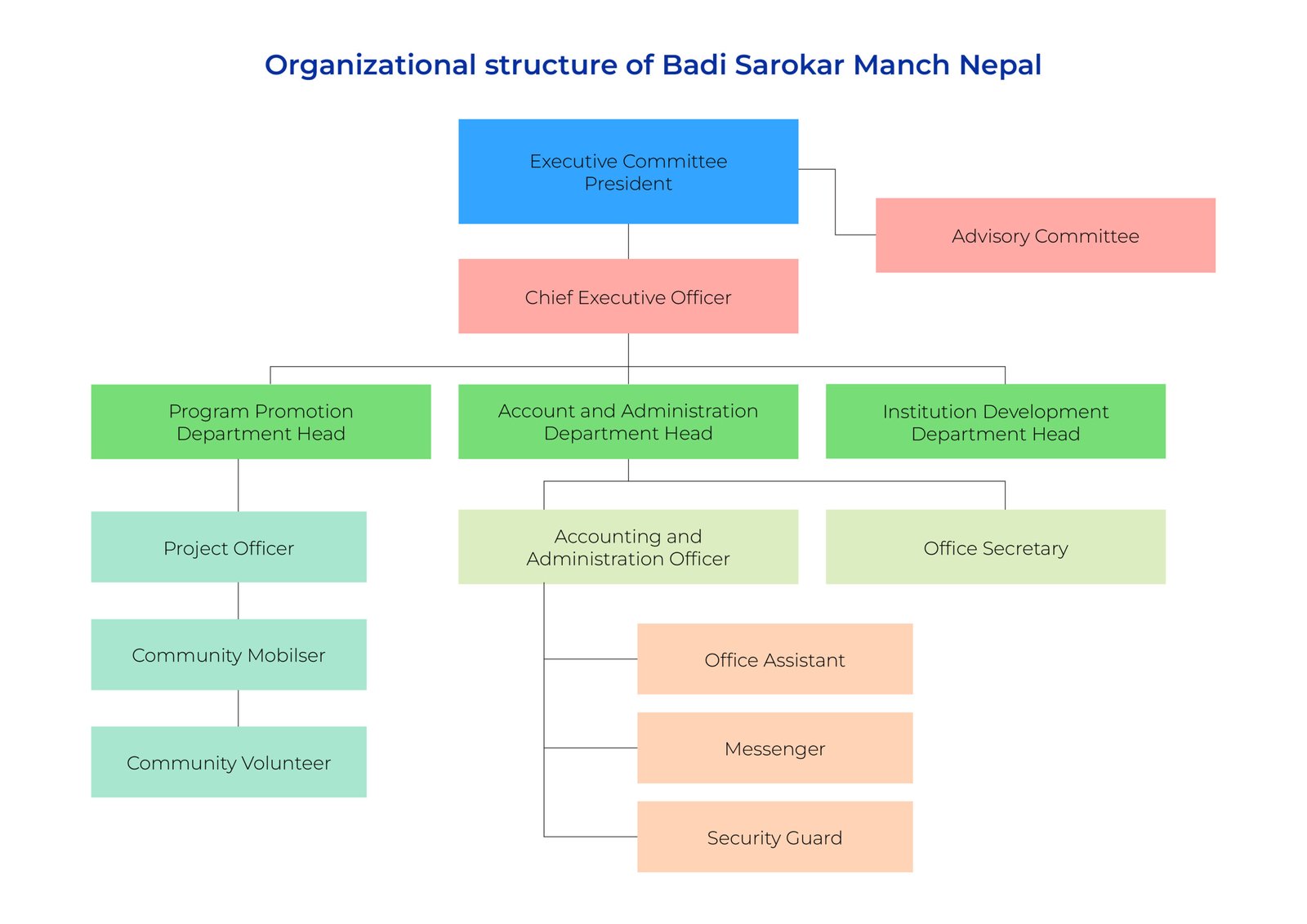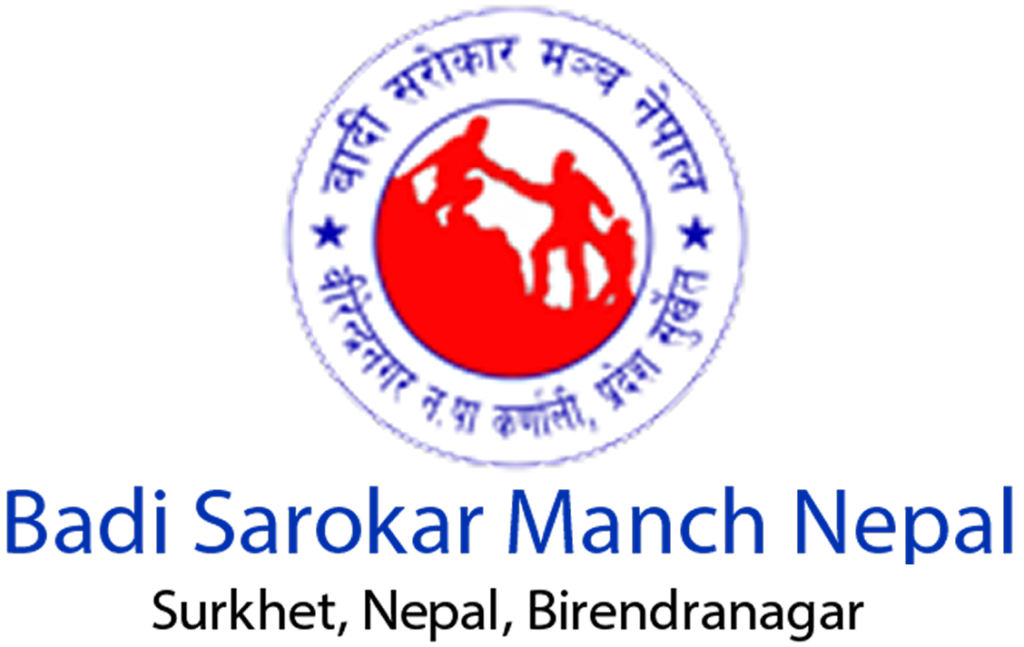संगठनात्मक संरचना


संरचनात्मक भूमिकाहरू
नेपालको विकेन्द्रीकरण नीति अनुसार, वादी सरोकार मञ्च नेपालले संस्थालाई सञ्चालन, कार्यक्रम र कर्मचारी परिचालनमा प्रभावकारी बनाउन तीन संरचनाहरू स्थापना गरेको छ। तल व्याख्या गरिए अनुसार यी संरचनाहरूको भूमिका, जिम्मेवारी र अधिकारहरू निम्नानुसार छन्।
संगठनात्मक संरचना
General Assembly
As per Chapter 2, Clause 5, Sub-clause 1 of the Badi Sarokar Manch Nepal Statute 2078 (First Amendment 2079), the organization shall have a General Assembly. This shall be the supreme governing body of the institution.
Board of Directors
As per Chapter 3, Clause 13, Sub-clause 6 of the Badi Sarokar Manch Nepal Statute 2078 (First Amendment 2079), the organization will have a five-member Board of Directors, led by the Executive Chairperson. The board will execute decisions of the yearly General Assembly and carry out activities as specified in the statute.
Advisory Committee
As per Clause 9, Sub-clause 2 (ङ) of the 2078 Statute (First Amendment 2079), an Advisory Committee shall be formed as needed to guide and advise the organization.
Program Promotion Department
This department shall run and operate various programs received from various organizations to fulfill the aims of the organization as per the statute.
Organizational Development Department
This department will be responsible for the institutional development of Badi Sarokar Manch Nepal, strengthening community organizations formed under the institution, and liaising with financial and public institutions for institutional capacity development.
Finance and Administration Department
To ensure effective management of financial, storage, and administrative tasks, the Finance and Administration Department will be operated under the oversight of a board member. The department will operate in line with the institution’s financial and staff administration policies.
Community support committees
To carry out community-level campaigns and activities with the active participation and leadership of the local members, a Community Support Committee will be established in each area of operation. The committee will follow gender inclusion and social integration principles, with a mixed representation comprising 33% women, along with youth, persons with disabilities, elderly, and third-gender persons.
PROGRAMMATIC STRUCTURE
Under its initial three-year strategic plan (2025-2027), Badi Sarokar Manch Nepal has classified the following core programs:
Child Protection and Promotion
This program includes activities of child protection centers (hostels), safe housing, education, life skills, health development, family reunification, and child rights advocacy.
Integrated Community Development
Education, livelihood improvement, income generation, health, nutrition, sanitation, disaster response, climate adaptation, and environmental sustainability programs will be implemented at the community level.
Social Inclusion and Mainstreaming
As a voice for the voiceless, Badi Sarokar Manch Nepal works to raise awareness about the rights of marginalized and underprivileged communities like Badi, Dalits, and other socially, culturally, and politically excluded groups. Policy advocacy, interactive discussions, research, documentation, and communication campaigns are conducted by this program to echo their voices at the national level.
Quality Education and Employment
Imparting quality education to the children and providing job opportunities for the youth and women is a top priority. The organization will strive to make the children competitive in terms of skills and empower the youth and women to enhance their earning. Formal education, vocational training, job-oriented training programs, and other such activities will be undertaken under this program.
Institutional Development
The program is directed towards the empowerment of community-based organizations, public awareness, human resource development, infrastructure development, publication of resource materials, organizational capacity building, and enhancing information technology (IT) systems for effective institutional development.
Employee Management Structure
To execute the programmatic, financial, administrative, and operational duties of the organization, the Board of Directors will appoint and mobilize necessary employees under the staff administration rules of the organization.
The organizational hierarchy will be:
- Support Staff (Non-ranked)
- Office Assistant (First Level)
- Assistant Officer (Second Level)
- Officer (Third Level)
- Department Heads (Fourth Level)
- Chief Executive Officer (Fifth Level)
The Head of the Institution shall be the Board Chairperson, and the Office Head shall be the Chief Executive Officer (CEO).
